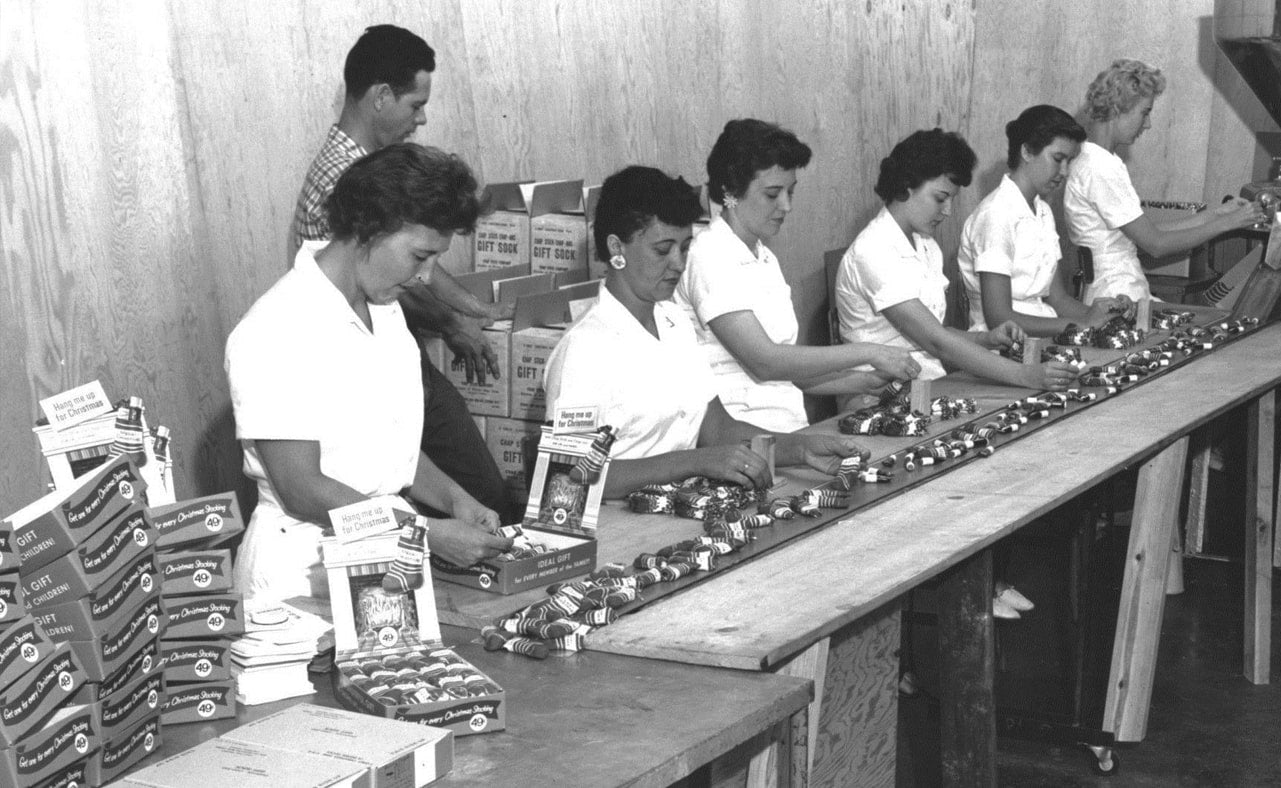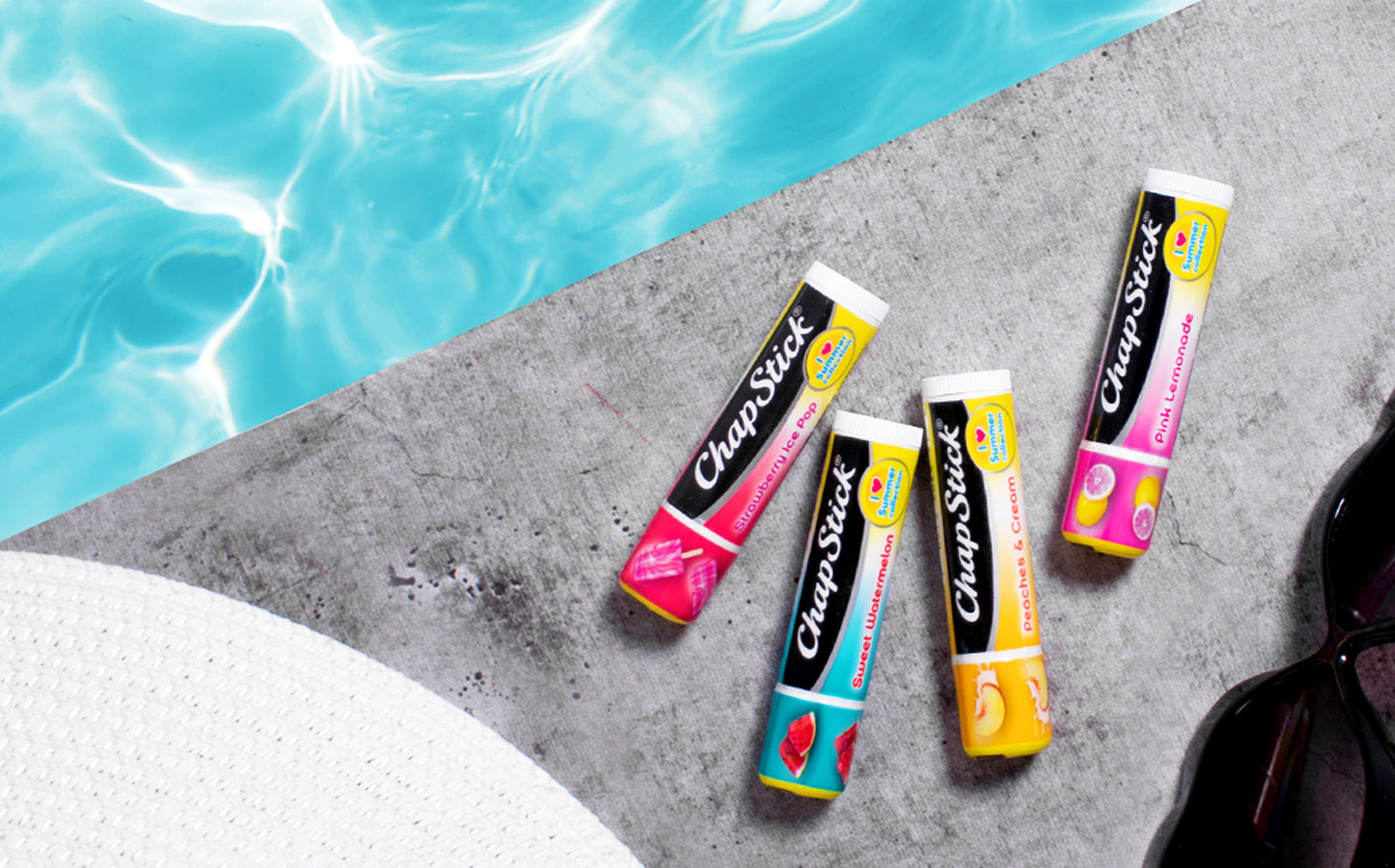
The idea of lip balm, something to soothe cracked lips and seal in moisture, is probably not that recent. After all, lip color goes all the way back to ancient times. So it seems likely that people would have sought a solution to dry lips if they were also trying to make them look more vibrant.
One of the earliest mentions of lip care we have on record, though, is the rather unique solution offered by Lydia Marie Child in her book, The American Frugal Housewife (1833): earwax. Child admitted this remedy might be laughed at, but she stood by it. It certainly was a frugal solution, at least!
Luckily, we've come a long way since then. ChapStick'®, the original lip balm, is now a household name and dedicated to perfecting the science of skincare for lips, so you can put your lips first.
The story of ChapStick'® begins in Lynchburg, Virginia, with Dr. Charles Browne Fleet. Dr. Fleet was a pharmacist and inventor who first opened his small, family-run pharmacy in Lynchburg in 1869. He was known to cook up experimental balms, salves and other remedies in his pharmacy, tinkering with recipes and ingredients to create products that would help his customers with a variety of ailments, big and small.
Sometime in the 1890s Dr. Fleet created what we now call ChapStick'®. Hoping to prevent and treat chapped lips, Dr. Fleet's original iteration resembled a small candle without a wick, wrapped in foil. Perhaps this design was part of why he had a hard time selling it'it's hard to imagine a Victorian lady pulling an unwieldy stick of wax out of her reticule and applying it to her lips. In 1912, Dr. Fleet asked his friend, John Morton, another Lynchburg resident, if he would be interested in buying the formula and rights to the lip emollient. Morton agreed, paying just $5 for the product.
Mr. Morton and his wife began to brainstorm on how to make the "chap stick" marketable. While experimenting with the formula, Mrs. Morton had the idea to pour the melted ingredients into brass tubes to mold it onto sticks that could be pushed up as the product ran out. From their home kitchen the Mortons launched an empire: the Morton Manufacturing Company was founded on the profits of the easy-to-pocket, wildly successful ChapStick'®. In 1936, as the ChapStick'® brand started to gain momentum, Morton asked a local commercial artist, Frank Wright, Jr., to design the ChapStick'® logo. For a flat, one-time fee of just $15, ChapStick'® got the look it's still using today.
ChapStick'® was manufactured by the Morton Manufacturing Company in Lynchburg until 1963, when it was bought by the A.H. Robbins pharmaceutical company. The new owners took manufacturing to Richmond, Virginia, and took the brand international. ChapStick'® launched in the UK in 1972.
The ChapStick'® brand changed hands a few more times before being bought by GlaxoSmithKline in 2019. Today the iconic little black tubes of lip balm are still made in Richmond, Virginia, and now have more than 100 years of history as one of the nation's top choices for lip skincare.
And just in case you were worried about either Frank Wright, Jr.'paid just $15 for one of the most recognizable logos in the world'or Dr. Fleet, who sold this wonder for only $5: Wright had a long, successful career in advertising, winning awards and recognition, and Dr. Fleet's company, C.B. Fleet, still exists today. Among other products it still sells one of his more successful inventions, laxatives.

